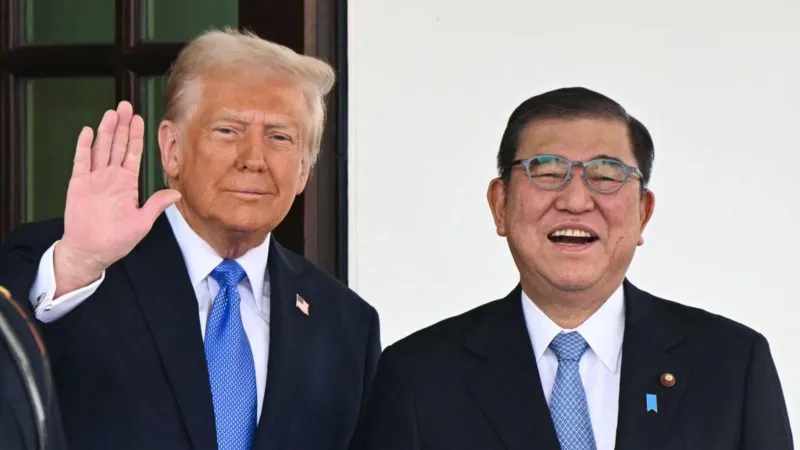Trump Secures Landmark Trade Deal with Japan, Promises Jobs, Market Access

U.S. President, Donald Trump has announced a sweeping new trade agreement with Japan, touting it as one of the largest in history and a major win for American economic interests.
Trump made the declaration Tuesday night via his social media platform, Truth Social, describing the deal as “massive” and “perhaps the largest Deal ever made.”
According to the president, the agreement includes reciprocal tariffs and major Japanese investments in the United States, though specific terms remain unclear.
“We just completed a massive Deal with Japan… Japan will pay Reciprocal Tariffs to the United States of 15%,” Trump posted. “This Deal will create Hundreds of Thousands of Jobs.”
Under the framework, U.S. importers will pay a 15% tariff on goods coming from Japan a move Trump called “reciprocal.” In addition, Japan has reportedly committed to investing $550 billion in the U.S., with Trump asserting that America would receive “90% of the profits,” though no official breakdown has been released to explain the profit-sharing mechanism.
Trump emphasized that Japan has agreed to expand trade access for key American exports, including rice, cars and trucks, and other agricultural products — sectors that were points of contention in earlier talks.
During an East Room reception with Republican lawmakers, Trump doubled down on the significance of the agreement, stating:
“I just signed the largest trade deal in history… It’s a great deal for everybody.”
For months, negotiations between the two allies had appeared deadlocked, especially over agricultural trade and the import of U.S. automobiles. Trump had previously criticized Japan for rejecting American rice despite a reported shortage, and for being reluctant to buy U.S.-made vehicles.
Despite the criticism, Japan imported 16,707 units of American vehicles last year, according to the Japan Automobile Importers Association. The country also bought $298 million worth of rice in 2023 and had purchased $114 million worth between January and April this year.
The announcement comes amid heightened trade tensions and looming tariff hikes. Trump had threatened a 30% tariff on Japanese imports starting August 1, raising the stakes for both economies. However, U.S. Treasury Secretary Scott Bessent’s recent meeting with Japanese Prime Minister Shigeru Ishiba in Tokyo signaled progress.
“A good deal is more important than a rushed deal… A mutually beneficial trade agreement remains within the realm of possibility.”
Analysts say the deal may help Japan avoid more severe tariffs while securing better terms for agricultural imports. Mary Lovely of the Peterson Institute noted it also gives Japanese consumers better access to U.S. farm goods like California rice.
Japan remains a critical economic partner for the United States. It was America’s fifth-largest source of imports in 2023, sending $148 billion worth of goods to the U.S., including cars, machinery, and electronics. Meanwhile, the U.S. exported $80 billion worth of goods to Japan, led by oil, pharmaceuticals, and aerospace products.
However, Japan also plays a delicate balancing act. While seeking closer ties with the U.S., it remains economically intertwined with China — its largest trading partner — making negotiations with Washington increasingly complex.
This latest trade agreement builds upon a prior 2019 deal that expanded duty-free trade between the two countries. It also underscores Japan’s financial leverage: the country is the largest foreign holder of U.S. debt, owning approximately $1.1 trillion in U.S. Treasuries.
Despite the fanfare, no official term sheet for the new deal has been published. Critics say the lack of transparency leaves open questions about implementation, oversight, and long-term impacts on American industries and consumers.
Even so, Trump hailed the agreement as a turning point for U.S.-Japan relations and for the domestic job market, saying it reflects “a very exciting time for the United States of America.”









